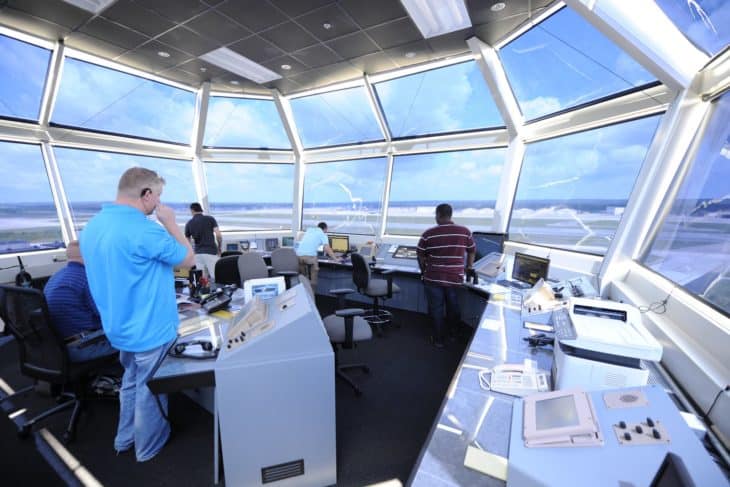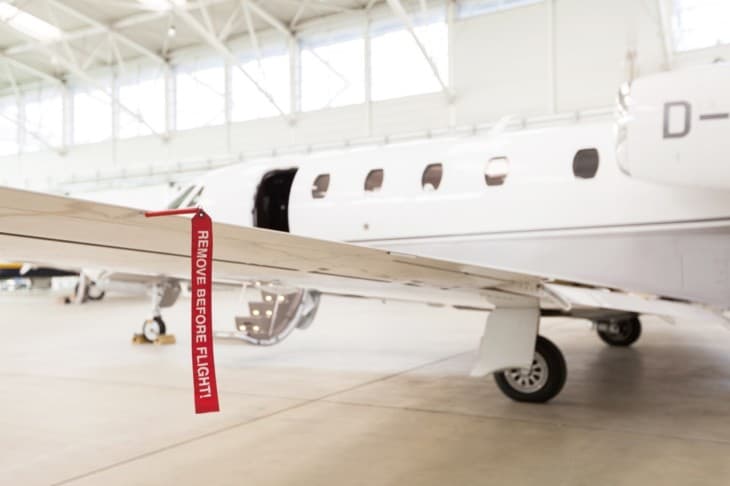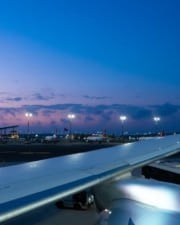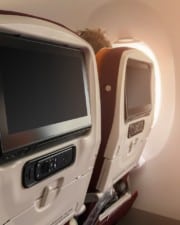From Captain Sully’s famous splashdown in the Hudson River to Malaysia Flight 370 to the many other crashes and disappearances that make the headlines, you’d be forgiven for thinking flying’s incredibly dangerous – but the truth is anything but.
In fact, however, flying is not just safe but one of the safest ways to travel – and here’s how.
1. Safe Flying by the Stats
As alluded to above, news broadcasts and films such as Sully, Air Force One, United 93, and so many more have a way of making flying look like an impossibly perilous action. However, when you look at the stats, it becomes clear just how safe flying is.
For example, there are approximately 0.07 deaths for every 1 billion miles flown. Compare that with 212.57 deaths and 7.28 deaths for every billion miles on the ground for motorbikes and cars, respectively. The numbers bear out that there’s really no comparison – flying’s much safer.
The numbers look even better when you put those numbers into context.
For example, in 2016 there were 325 deaths while flying, which were the result of 19 crashes – out of a total of roughly 35.2 million flights that year. In fact, 2016 ranked as the second-safest year for flights in history.
Incidentally, none of those fatal flights came on US-certificated planes.
David Ropeik, a Harvard professor who specializes in risk communication, calculated the risk probability and found that while your odds of dying in a car crash are 1 in 5,000, your odds of dying in a plane crash are 1 in 11,000,000.
You are actually more likely to get struck by lightning (1 in 13,000) than die in a plane crash.
There used to be more crashes and fatalities due to causes such as mechanical failures and, as explained below, terrorist activity.
However, as technology and safety protocols have improved, so have the safety numbers. As explained by Julie O’Donnell, a spokeswoman for Boeing, where in the 50s and 60s fatalities occurred roughly every 200,000 flights, today “fatal accidents [occur] less than once in every two million flights.”
Part of that may be due to the fact that accidents are no longer the instant fatalities that they once were. In fact, according to the National Transportation Safety Board, you have a 95% chance of surviving an accident now.
2. Quantifying Terrorism
The tragic events of the morning of 9/11 changed the world forever, especially when it comes to flying. Even 20 years later, the event still looms large in our collective consciousness, and it’s fair to say that the world of aviation and flight security in particular will be the same.
Still, 9/11 hardly invented the scare over hijackings. The first documented hijacking dates all the way back to 1930, performed by Peruvian activists, while the first commercial hijacking took place in Macau in 1948, killing all but one passenger about the flight bound for Hong Kong.
The 1970s saw a spate of them, including simultaneous hijackings in 1970 carried out by a terrorist organization (the Popular Front for the Liberation of Palestine) on planes destined for US and European destinations, with Jewish passengers in particular singled out.
The late 60s and 70s also saw hijackings attempt to divert planes to Cuba. The situation was so bad during this period that between 1868 and 1972 there were an incredible 130 hijackings, with the situation getting so bad that “Take Me to Cuba!” became something of a punchline.
One of the most infamous pre-9/11 hijackings was TWA Flight 847, in which Hezbollah terrorists hijacked a plane bound from Athens to Rome, sought out passengers with “Jewish-sounding” names, and forced a two week-long hostage situation at an airport in Beirut.
But for as horrific and unforgivable as actions such as these were, the actual risk of terrorism is negligible today, and has dropped dramatically since 9/11 due to changes in security and airplane construction (for example, improved cockpit doors).
In the 20+ years since 9/11 there have been “only” 50 hijackings, none of which occurred in the United States.
To return to our stats game, Nate Silver at Five Thirty Eight crunched the numbers and found that there is roughly one instance of plane-related terrorist activity for every 11,569,297,667 miles flown over the past decade.
As Silver helpfully points out, that distance is as much as 1,459,664 trips around the globe, or two round trips to Neptune and back.
There were 674 passengers on the flights affected by terrorist activity in this span of time, compared with roughly 7,015,630,000 passengers.
To return to a previous example, Silver estimates that you could be struck by lightning 20 times and that would still be statistically more probable than boarding a flight on which terrorist activity occurs.
3. Improved Testing
Airplanes have always undergone an extraordinary amount of testing, and that has only increased with time, with several components of aircraft design being subject to increased scrutiny in recent decades.
For example, wings are designed and tested to be far more flexible than in the past. Modern planes’ wings can often bend up to 90 degrees before they snap during testing.
This is done to find the wings’ breaking point and, with that data, do whatever is necessary to shore up those wings and ensure that they do not snap when exposed to severe conditions.
Wings are, therefore, exposed to more pressure than they typically experience during flight.
Engines are also designed to function in the event of a disaster, and pilots are trained to be able to fly even if their engine was on fire.
This was the case on February 20 of this year when a Boeing 777-200’s engine caught fire shortly after taking off from Denver. Despite the incredible video taken by passengers via smartphone, the pilot was able to land safely and relatively easily with no injuries.
Helping with this is ingestion testing, which involves simulations of events such as bird strike tests (which, yes, simulates a bird hitting the engine mid-flight) and windshield and water to simulate rough landing conditions. The latter ensures that water doesn’t seep into planes’ engines in the event of water landings.
Velocity minimum unstick tests involve a pilot dragging a plane’s tail along a runway, which helps determine the lowest possible amount of speed necessary for takeoff.
Altitude and temperature testing help ensure that the materials from which the planes are constructed remain operational at all temperatures and in all conditions.
Brake testing is just what it sounds like, with planes being loaded up to their maximum weight with brake pads then fastened onto them. The plane then accelerates up to takeoff speed before the brakes are activated, and it is forced to stop.

That’s just the beginning. Planes are also tested for a wide range of rare but important emergency conditions to ensure that they are able to meet any situation.
For all of our talk of lightning strikes, for example, planes are tested for how well they can respond if hit with one. They are also tested for low fuel situations.
All of this is done in large part due to both the increased importance of safety standards over time in winning certification for one’s flight as well as customer demands and the basic need for safety.
It is in everyone’s best interests to make planes safer, and that’s precisely what plane designers and testers endeavor to do.
4. Improved Air Traffic Control

As a result of all the above, as well as the natural progression of technology, planes are a lot more sophisticated and, as a result, a lot safer today than they were in the past. Just as important as this, however, is the increased capability of air traffic control.
The importance of this should be all too obvious. Pilots need a link with air traffic control to ensure that their flight path is clear as well as to talk through any potential emergencies or changes to their flight plan.
A lot of the improved ability of air traffic control centers and workers today has to do with improvements in technology over the past decade.
In the past, air traffic controllers were forced to rely on earth-centric navigation programs. While these programs could be useful, they were still somewhat limited as well as inconvenient and lacking in efficiency.
For example, the limitations of these methods often limited air traffic control and pilots to specific routes as well as altitudes.
Today, air traffic control relies a lot more on advanced GPS technology. This allows air traffic controllers to give their pilots in the air more accurate and up-to-the-minute information while allowing them to cut much more efficient flight plans in the air.
Another byproduct of this is that it reduces the likelihood of collisions happening in the air as well as cuts down on potential confusion as to takeoffs and landings.
Finally, these systems also allow air traffic control teams to better respond to inclement weather. Not only does this help make flights safer, but it can also help shorten delays.
References ▾
- https://www.history.com/this-day-in-history/sully-sullenberger-performs-miracle-on-the-hudson
- https://www.britannica.com/event/Malaysia-Airlines-flight-370-disappearance
- https://www.sheffield.com/air-travel-safest-mode-transportation
- https://www.refinery29.com/en-us/2017/04/152025/safest-place-to-sit-on-airplane#:~:text=The%20ASN%20found%20that%20in,scheduled%20airlines%20worldwide%20in%202016.
- https://www.telegraph.co.uk/travel/advice/2016-air-accidents-aviation-safety/
- https://www.upi.com/Archives/1981/12/08/First-hijacking-was-in-1930-the-biggest-were-in-the-60s/6680376635600/
- http://www.findingdulcinea.com/news/on-this-day/May-June-08/On-this-Day--The-First-Commercial-Flight-is-Hijacked.html
- https://www.pbs.org/wgbh/americanexperience/features/hijacked-1970-hijackings/
- https://www.boston25news.com/news/trending-now/famous-plane-hijackings-have-seen-many-methods-reasons/185094678/
- https://www.cnn.com/2021/02/20/us/united-airlines-flight-returns-debris/index.html
- https://readwrite.com/2018/12/21/air-travel-is-far-safer-than-you-think-heres-why/#:~:text=Flight%20Critical%20Systems%20are%20Protected&text=This%20means%20airplanes%20are%20regularly,sky%2C%20air%20travel%20remains%20safe.
- https://lifehacker.com/six-airplane-facts-to-cure-your-fear-of-flying-1788654431
- https://fivethirtyeight.com/features/odds-of-airborne-terror/
- https://www.usatoday.com/story/news/2016/03/29/hijackings-rare-after-911-security-improvements/82375474/
- https://www.thestar.com/news/world/2015/03/26/jet-cockpit-doors-nearly-impossible-to-open-by-intruders.html
- https://www.history.com/this-day-in-history/twa-flight-847-is-hijacked-by-terrorists
- https://www.aerotime.aero/15042-take-me-to-cuba-the-skyjacking-craze-of-the-1960s
- https://www.vox.com/2016/3/29/11326472/hijacking-airplanes-egyptair
Related Posts













